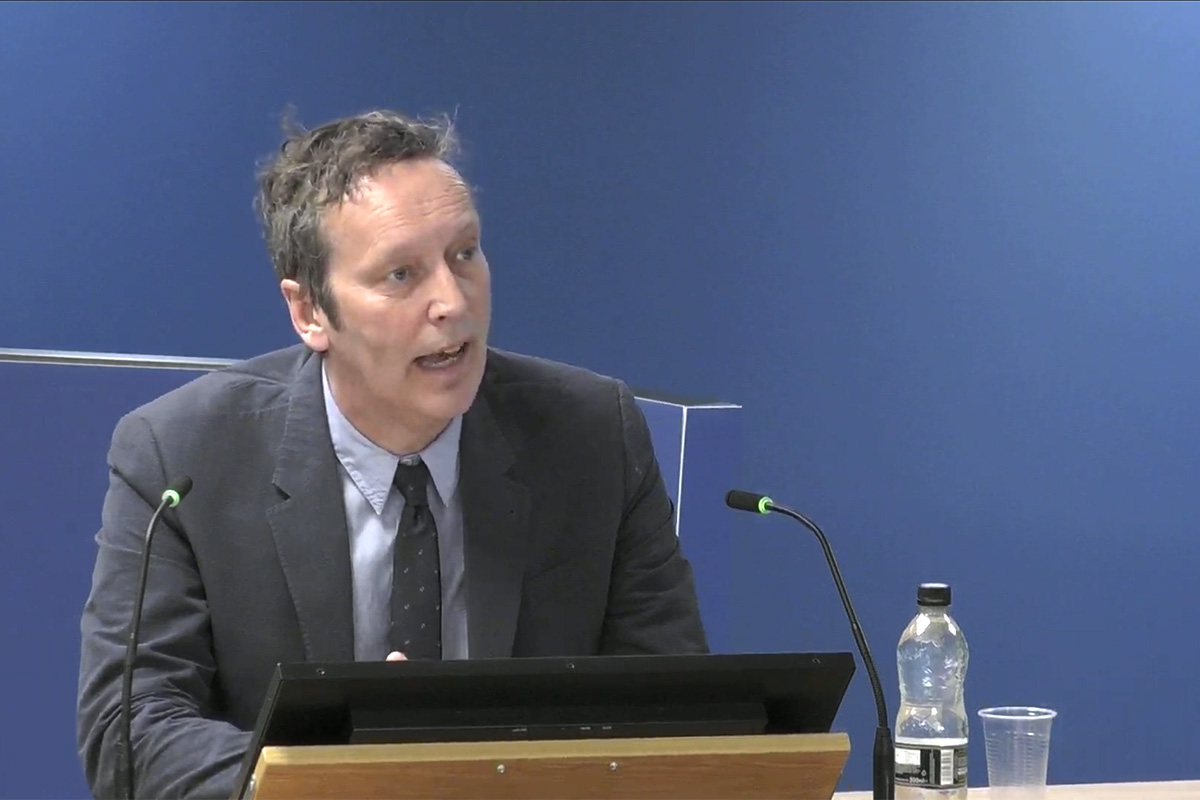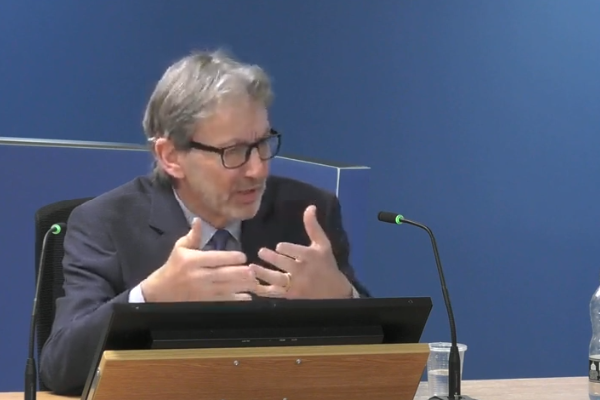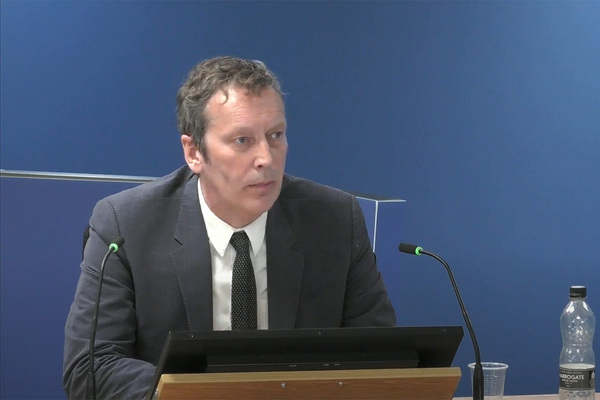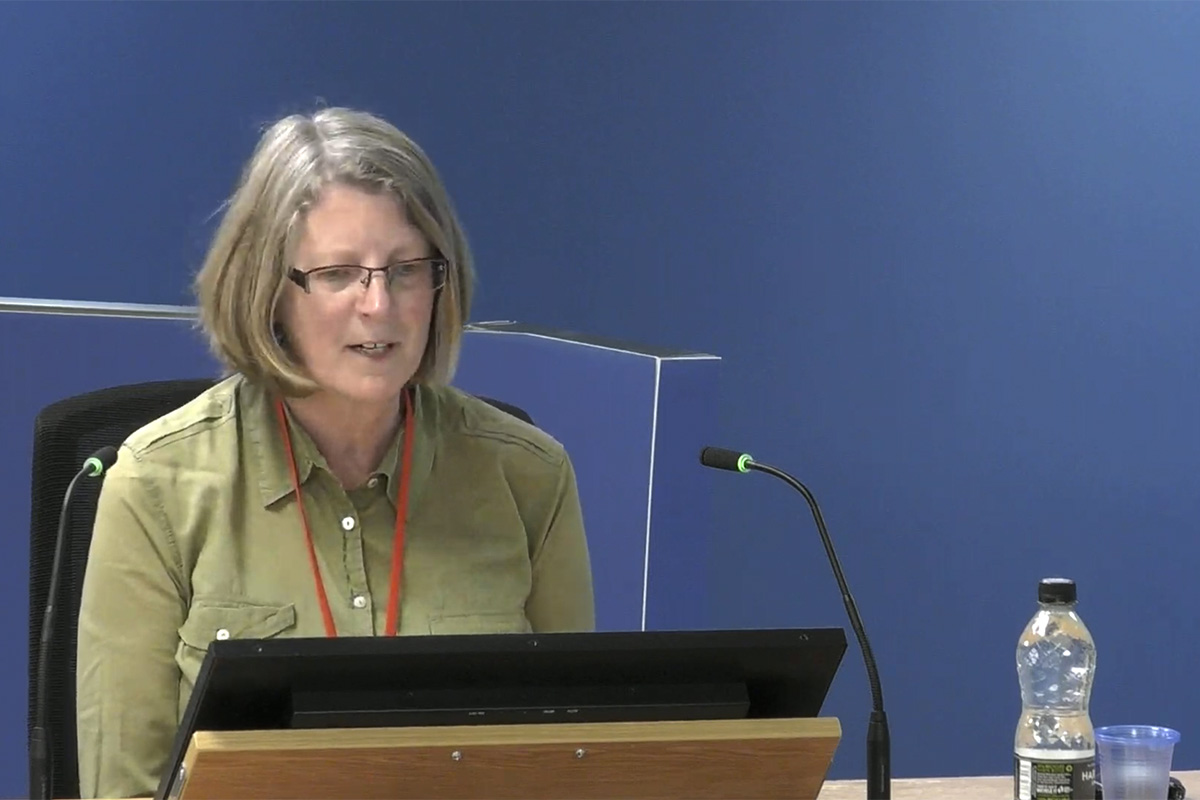KCTMO director called Grenfell resident blog that raised safety concerns ‘agitating’ and ‘libellous’
A resident of Grenfell Tower who raised fire safety concerns on a blog was accused of “agitating” by a director of the building’s management company, who instructed colleagues to investigate whether the resident’s criticism could be considered “libellous”, the inquiry heard today.
Peter Maddison, former director of assets and regeneration at Kensington and Chelsea Tenant Management Organisation (KCTMO), sent the email in April 2015, at the time resident Edward Daffarn was attempting to form a collective group to represent residents concerned about the refurbishment of Grenfell Tower.
“Mr Daffarn is continuing to agitate in Grenfell Tower,” Mr Maddison wrote in the email. “He is clearly distributing misleading information. Fola [a colleague at KCTMO] – I wonder if you could advise on the point at which his comments become libellous?”
The inquiry saw that Mr Maddison was referring to a blog post in which Mr Daffarn asserted that KCTMO and lead contractor Rydon were “using threatening and intimidatory tactics to scare residents into allowing them access to our homes”.
When Mr Maddison was asked what he had done to investigate the allegation, given that the blog was posted less than 24 hours before Mr Maddison branded it misleading, he said that the claims were “broad statements”, making them difficult to investigate.
“We wouldn’t tell people if they would risk losing their tenancies unless they gave access that just wasn’t factually true,” he said.
He said he “had conversations with the project team” about what was alleged.
It was reported in the months after the fire that another of the blog’s contributors, Francis O’Connor, was sent a letter warning him that the blog could be considered “defamatory” by the Royal Borough of Kensington and Chelsea, in 2013.
It went on to warn of a disaster in November 2016, with a post that said “only an incident that results in serious loss of life of KCTMO residents will allow the external scrutiny to occur that will shine a light on the practices that characterise the malign governance of this non-functioning organisation”.
The inquiry heard last week that the blog was blocked from KCTMO servers to prevent staff from reading it, but Mr Maddison said today that he continued to monitor what was posted.
He also objected to the blog complaining that KCTMO had previously “worked to prevent tenants and leaseholders from forming any form of collective resident representation”.
KCTMO had in fact refused to acknowledge the group that Mr Daffarn and other residents had formed, with one internal KCTMO email branding it “a showcase for Mr Daffarn”.
Mr Maddison said that this was because KCTMO had “consulted residents and… there was no appetite at all from that consultation for public meetings”.
The inquiry was shown this consultation, which involved 21 residents selecting “individual letter” as the top preference for consultation and only one selecting “formal meeting held between 6pm and 7pm” at a consultation in December 2013.
However, internal KCTMO minutes from November 2013 record: “It had been agreed to hold no more public meetings [regarding the Grenfell Tower refurbishment] because of the stand being made by the Grenfell Tower leaseholder group.”
In his witness statement, Mr Maddison said the minutes “inaccurately record” and the reality was the meetings “were poorly attended and nobody wanted them”.
This was one of several instances throughout his evidence when Mr Maddison claimed that meeting minutes were wrong.
“Why did you not correct the minutes?” asked Richard Millett QC, lead counsel to the inquiry.
“I don’t know that I picked up that nuance,” replied Mr Maddison.
“So this is another example of minutes of meetings which you would disagree with?” Mr Millett asked.
“I think it’s not precisely what I was reporting. In reality what we did from that point… was to consult residents in the way they wanted to be consulted,” replied Mr Maddison.
Later in his evidence, Mr Maddison was asked about a complaint made by Mr Daffarn regarding a door in a neighbouring flat that was left standing open while temporarily empty after Rydon had worked on it.
Mr Daffarn claims that he attempted to close it but could not, because of the self-closing device holding it open.
When he raised this with KCTMO, Mr Maddison dismissed the complaint, saying that Rydon staff were able to pull the door closed. Mr Daffarn responded angrily, saying Mr Maddison was effectively accusing him of lying.
But today, Mr Maddison was shown a passage in his witness statement to the inquiry that contradicted what he said to Mr Daffarn. It claimed: “The door closer was repaired and an apology given.”
“That’s incorrect. I think that’s been wrongly noted there,” he said today.
“Well what should have been said?” Mr Millett asked.
“That the door was closed and an apology given. Apologies, that’s a mistake in my witness statement,” he said. He denied that he was changing his testimony after hearing Mr Daffarn give evidence on this point last week.
“I feel bound to suggest to you that when you said in your statement that the door was repaired that was true and that was true because it was broken earlier,” Mr Millett said.
Mr Maddison responded that he had taken the information from Rydon that it was not broken “at face value”.
He said he believed if the self-closer was broken this would have been fixed as part of the improvements carried out to the property before it was re-let.
The inquiry has revealed that dozens of self-closing devices inside the tower were broken on the night of the fire – an issue that is believed to have been a major factor in smoke spreading into communal landings and the single staircase.
The inquiry continues with evidence from a cladding expert tomorrow.
Sign up for our weekly Grenfell Inquiry newsletter
Each week we send out a newsletter rounding up the key news from the Grenfell Inquiry, along with the headlines from the week
Already have an account? Click here to manage your newsletters













